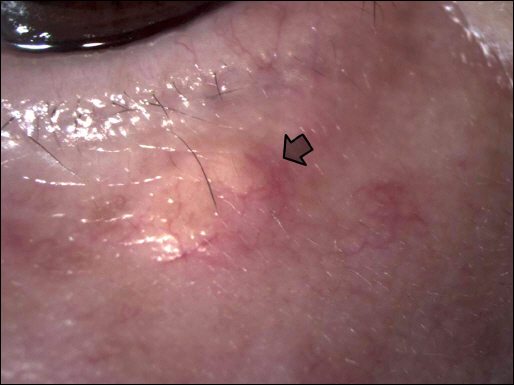J Korean Ophthalmol Soc.
2013 Mar;54(3):396-400. 10.3341/jkos.2013.54.3.396.
The Effects of Intralesional Steroid Injection for Chalazion According to the Concentrations of Triamcinolone Acetonide
- Affiliations
-
- 1Cheil Eye Hospital, Daegu, Korea. drmhj92@hanmail.net
- KMID: 2216757
- DOI: http://doi.org/10.3341/jkos.2013.54.3.396
Abstract
- PURPOSE
To compare the efficacy of an intralesional steroid injection in the treatment of chalazion according to triamcinolone acetonide (TA) concentrations.
METHODS
A total of 108 patients with 120 chalazia received an intralesional injection of TA. Patients were divided into 3 groups according to the concentrations of TA: 5 mg/ml, 10 mg/ml, and 40 mg/ml. A regular follow-up was performed and the size of lesion and recurrence were evaluated.
RESULTS
Success was defined as a minimum of 80% decrease in size with no recurrence. The success rate was 78.1% in the 5 mg/ml group, 76.2% in the 10 mg/ml group, and 78.4% in the 40 mg/ml group. These results were not statistically significant (p = 0.999, Fisher's exact test). Yellow deposits developed in 4 out of 37 lesions in the 40mg/ml group, and in 1 out of 42 lesions in the 10 mg/ml group. Skin depigmentation was observed in 1 case in the 5 mg/ml group.
CONCLUSIONS
Intralesional TA injection is an effective treatment for chalazion. There is no significant difference in success rates according to the concentrations of TA. However, caution is advised in cases of high injection concentrations of TA to prevent yellow deposits.
MeSH Terms
Figure
Reference
-
References
1. Dua HS, Nilawar DV. Nonsurgical therapy of chalazion. Am J Ophthalmol. 1982; 94:424–5.2. Pizzarello LD, Jakobiec FA, Hofeldt AJ, et al. Intralesional corticosteroid therapy of chalazia. Am J Ophthalmol. 1978; 85:818–21.
Article3. Ben Simon GJ, Huang L, Nakra T, et al. Intralesional triamcinolone acetonide injection for primary and recurrent chalazia: is it really effective? Ophthalmology. 2005; 112:913–7.
Article4. Mohan K, Dhir SP, Munjal VP, Jain IS. The use of intralesional steroids in the treatment of chalazion. Ann Ophthalmol. 1986; 18:158–60.5. Ben Simon GJ, Rosen N, Rosner M, Spierer A. Intralesional triamcinolone acetonide injection versus incision and curettage for primary chalazia: a prospective, randomized study. Am J Ophthalmol. 2011; 151:714–8.
Article6. Park JH, Son JH. Effectiveness for intralesional triamcinolne acetonide injections for chalazia in pediatric patients. J Korean Ophthalmol Soc. 2009; 50:1295–300.
Article7. Watson AP, Austin DJ. Treatment of chalazions with injection of a steroid suspension. Br J Ophthalmol. 1984; 68:833–5.
Article8. Kim YW, Lee JO, Lee HB. Intralegional triamcinolone acetonide therapy of chalazia. J Korean Ophthalmol Soc. 1980; 21:377–9.9. Park YG, Park YT, Hong KS. Intralesional triamcinolone acetonide therapy of chalazia. J Korean Ophthalmol Soc. 1981; 22:499–502.10. Leinfelder PJ. Depo-Medrol in treatment of acute chalazion. Am J Ophthalmol. 1964; 58:1078.
Article11. Thomas EL, Laborde RP. Retinal and choroidal vascular occlusion following intralesional corticosteroid injection of a chalazion. Ophthalmology. 1986; 93:405–7.
Article12. Hosal BM, Zilelioğlu G. Ocular complication of intralesional corticosteroid injection of a chalazion. Eur J Ophthalmol. 2003; 13:798–9.13. Smythe D, Hurwitz JJ, Tayfour F. The management of chalazion: a survey of Ontario ophthalmologists. Can J Ophthalmol. 1990; 25:252–5.14. Khurana AK, Ahluwalia BK, Rajan C. Chalazion therapy. Intralesional steroids versus incision and curettage. Acta Ophthalmol. 1988; 66:352–4.
Article15. Prasad S, Gupta AK. Subconjunctival total excision in the treatment of chronic chalazia. Indian J Ophthalmol. 1992; 40:103–5.
- Full Text Links
- Actions
-
Cited
- CITED
-
- Close
- Share
- Similar articles
-
- Intralegional Triamcinolone Acetonide Therapy of Chalazia
- Comparison of Intralesional Triamcinolone Acetonide Injection Efficacy for Chalazion According to Age and Lesion Size
- Comparison of Effectiveness Between Intralesional Triamcinolone Injections and Incision and Curettage for the Primary Chalazia
- Intralesional Injection of Verapamil Only and Verapamil and Serial Triamcinolone Acetonide in Peyronie's Disease
- Effectiveness for Intralesional Triamcinolne Acetonide Injections for Chalazia in Pediatric Patients


